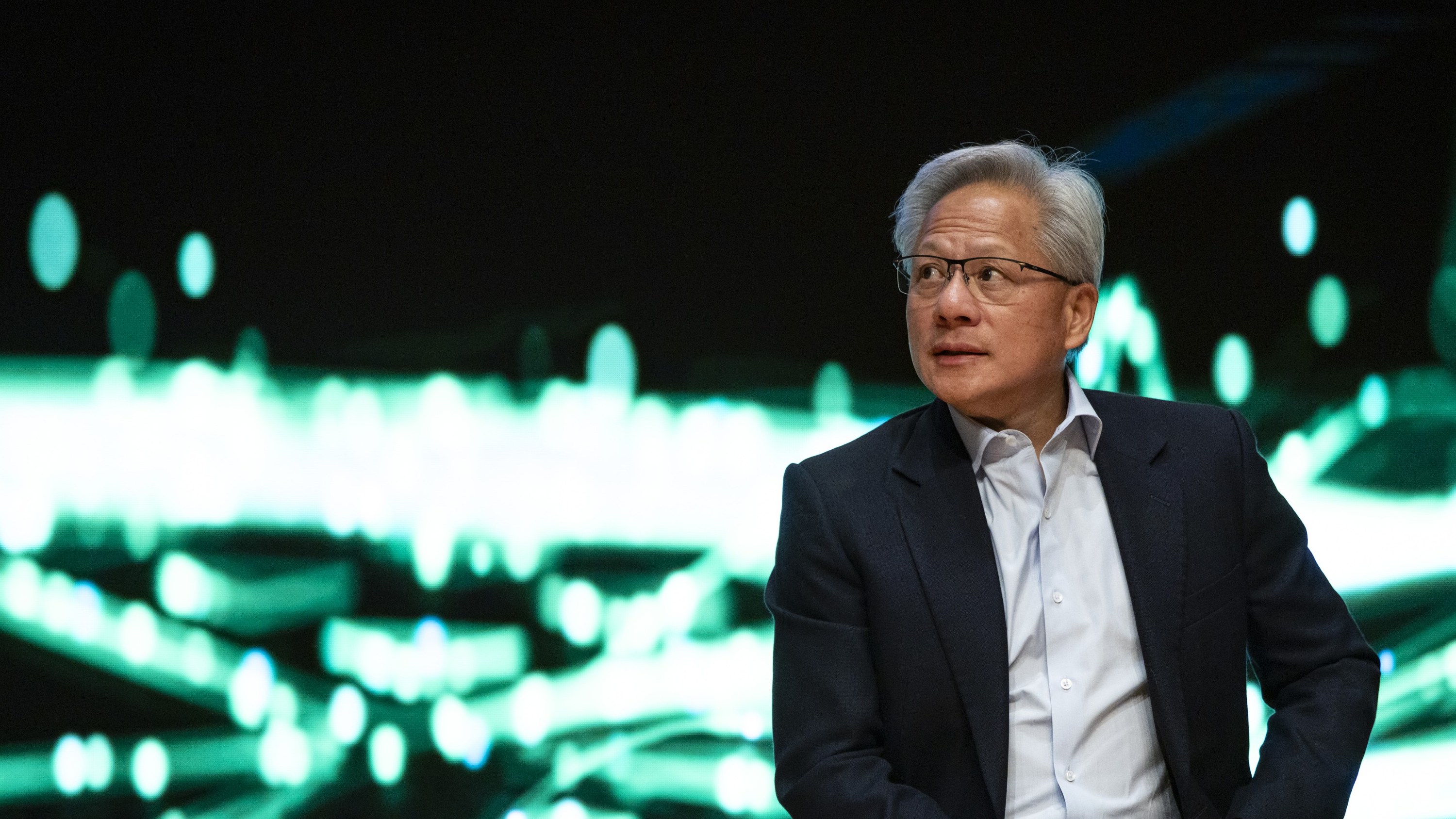Tokyo 42 for Xbox One review: A sleek and stylish shooter you don't want to miss
Tokyo 42 is a sleek twin-stick shooter for Xbox One, but it's the game's stylish city that really steals the show.
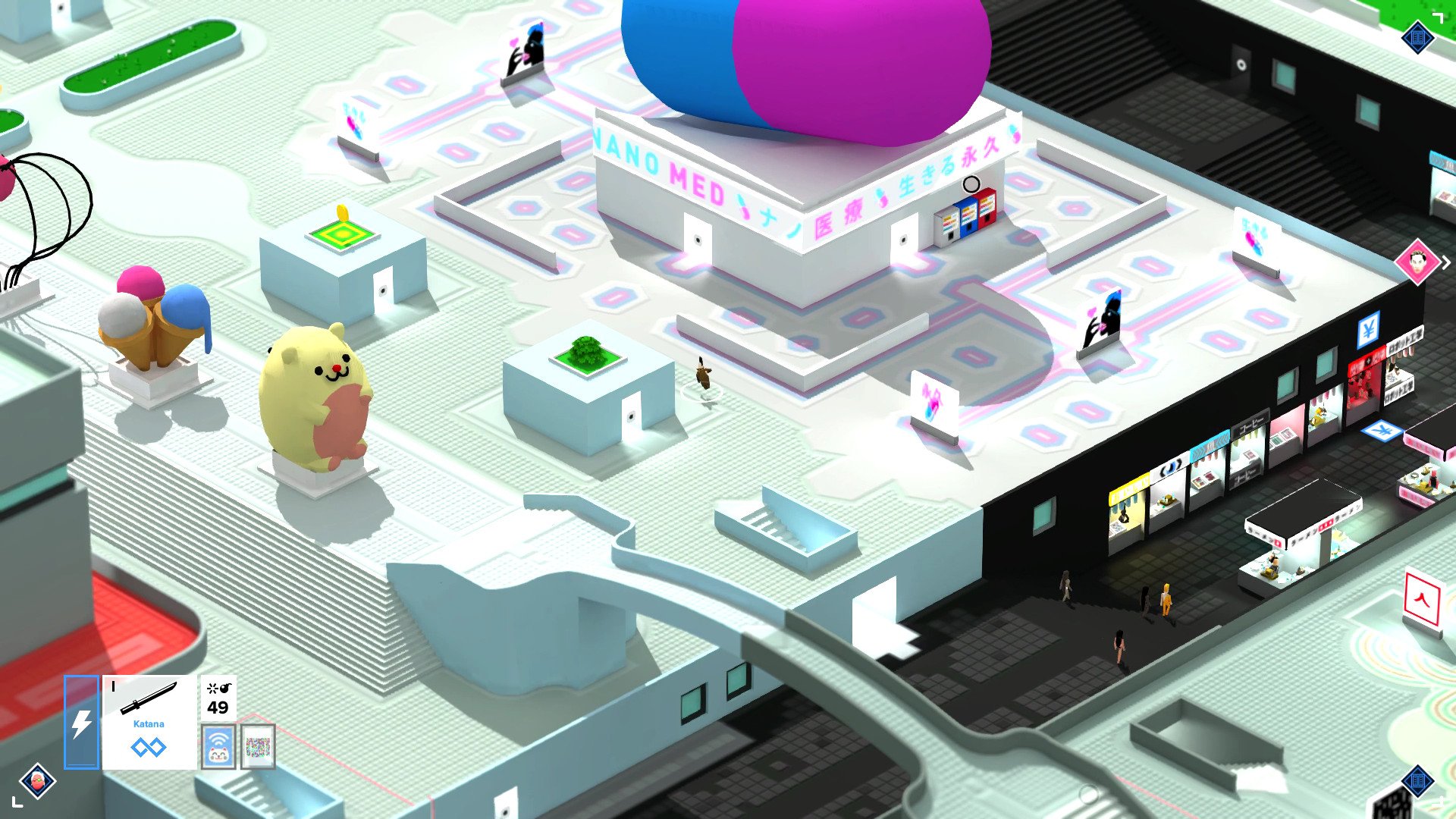
Tokyo 42 is a game that's hard not to be drawn into. From its reveal early last year, its miniature isometric world has been the center of attention, painting a futuristic look at modern-day Tokyo. This shooter doesn't look like your everyday open-world game, and on top of its unique art style it manages to introduce some unique twin-stick mechanics.
Story: Trouble in Tokyo
Tokyo 42 drops players into a criminal underworld after being framed for a murder they didn't commit. With your name smeared and nowhere to run, you soon find yourself capping off crooks and working your way into a world of crime to clear your name. However, after soon gaining attention for your actions, you're quickly pulled into a darker conspiracy.
While the narrative isn't a major draw of Tokyo 42, it plays a huge role in establishing its surrounding world. For a game that rides so heavily on its stylized environments and the atmosphere it creates, the characters only build on the game's strengths. An instant messaging overlay is used to house a majority of the game's text-based conversations and through this, personalities are developed for each of the key characters. Throughout the game, you'll come to meet a range of personas, each with their own beliefs and motivations that inject meaning into the actions you're forced to take as a player.
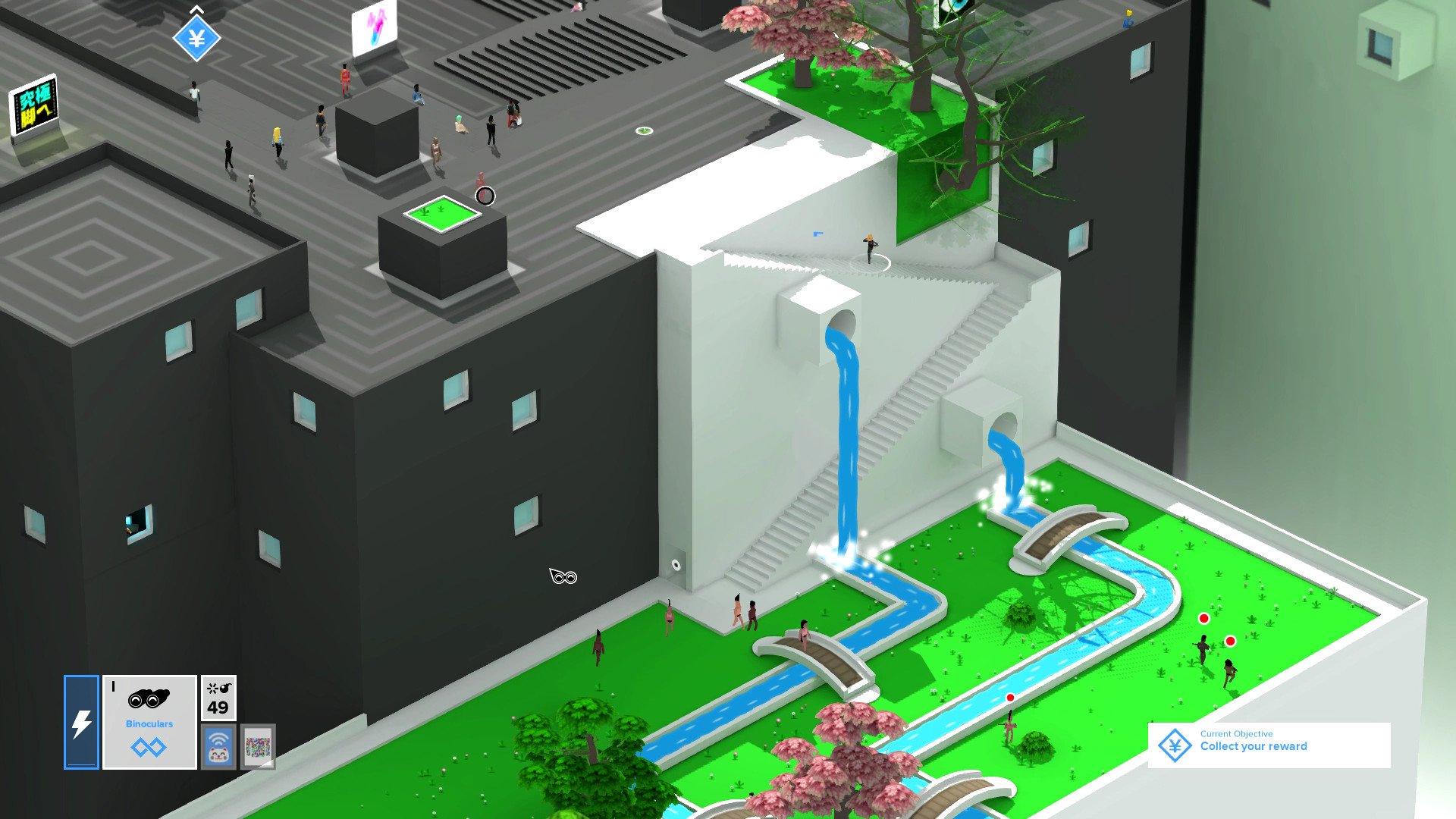
One of the most interesting aspects of its narrative delivery is the anonymity of the protagonist — the character you learn the least about throughout the whole game. Conversations with the player are entirely one-sided and little is learned about the player through other characters themselves. While in many games a bland protagonist can be its downfall, this approach puts the spotlight on Tokyo 42's biggest strengths: the world and its inhabitants.
World: Metropolitan paradise
What's been created here is one of the best examples of video games as a visual art form.
When you first lay eyes on Tokyo 42, it's hard not to be captivated by its aesthetic. The game's handcrafted geometric landscape is like no other, with a sleek and stylish adaptation of the bustling streets of Japan. Whether it's a simple apartment building or towering cat-shaped structure, there's something that's just so attractive about the open world. It's hard to even take a screenshot that isn't pure eye-candy, made possible by the attention to detail across the board.

Unlike many of today's biggest games, where the world is merely a backdrop, Tokyo 42's world takes center stage. It's rare that a game's world can be so alluring, but what's been created here is a an excellent example of a video game as a visual art form. So far, I've loved every second spent in Tokyo 42's urban showpiece and have every intention to continue exploring. There are even rewards for doing so, with secrets littered amongst the cityscape.
All the latest news, reviews, and guides for Windows and Xbox diehards.
Tokyo 42 clearly takes heavy influences from modern Asian culture, as evidenced by both its environments and themes. From its architecture, narrative and even background music, both traditional Japanese arts, and pop culture shine through its presentation. Being vibrant on the surface, the underlying criminal underworld and controlling corporations also pay clear homage to "Neo Tokyo" and other media within the cyberpunk genre. Overall, the game captivates the stereotypical endearing and technological traits of modern-day Tokyo, wrapped up in a sleek and futuristic presentation.
Gameplay: Shifting perspectives
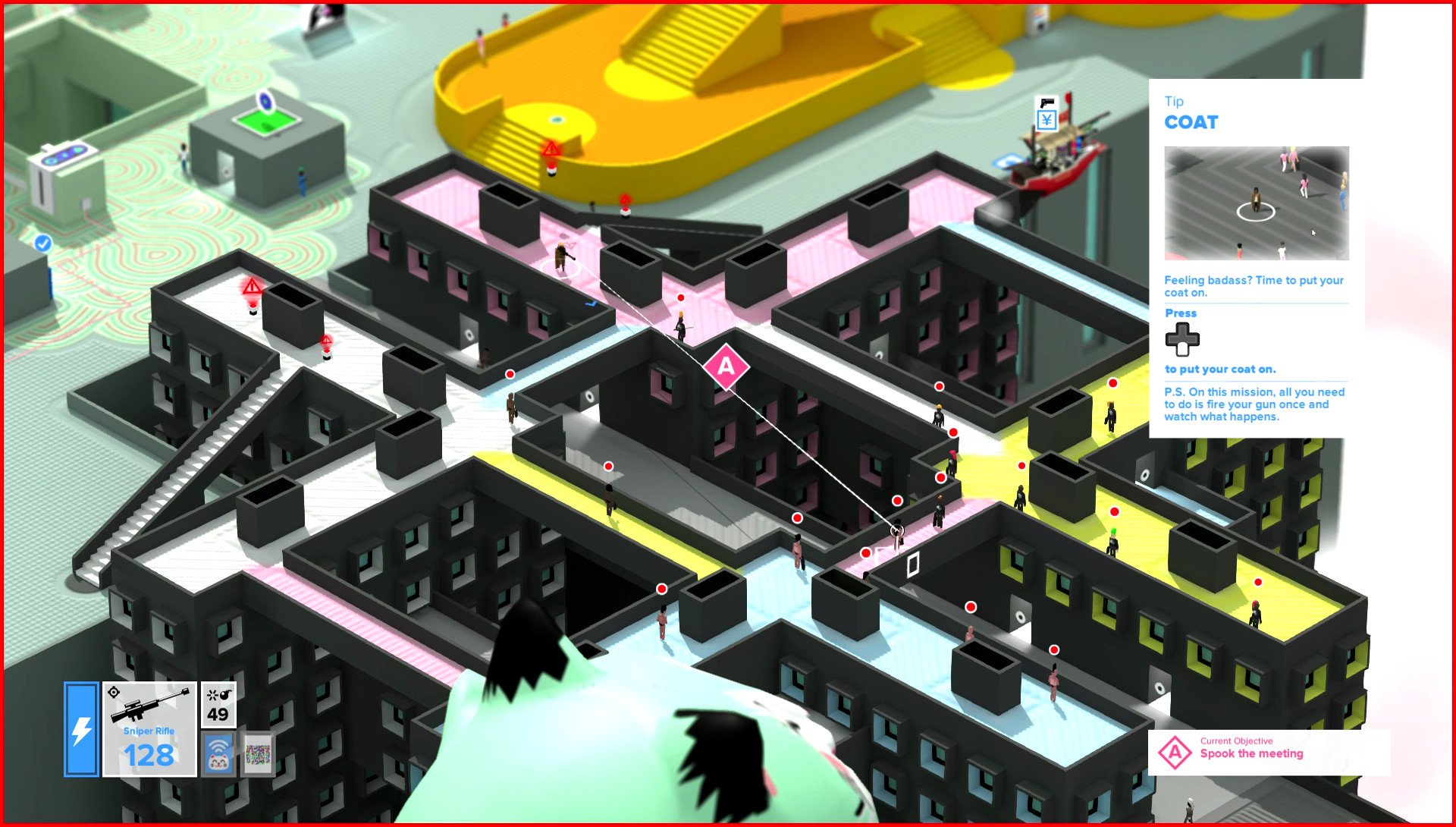
From early on, the player is encouraged to consider multiple approaches to a scenario.
Missions in Tokyo 42 mostly revolve around assassinations, sabotages, and heists within the criminal underworld. From early on, the player is encouraged to consider multiple approaches to a scenario and how these can be executed in each situation. While it's usually the choice between charging in guns-blazing or a stealthy approach, simply having the option makes for a nice variation in combat.
If you choose to take an offensive strategy, a wide range of weapons will be available and expandable over the course of the game. Using credits earned by completing missions, you'll be able to upgrade your stockpile and become more efficient on the field. However, slow bullet travel makes gunfights considerably more challenging, with a need to consider all incoming bullets and explosives. Although there aren't as many choices available to stealth players, this is also a valid alternative play style in some of Tokyo 42's encounters.
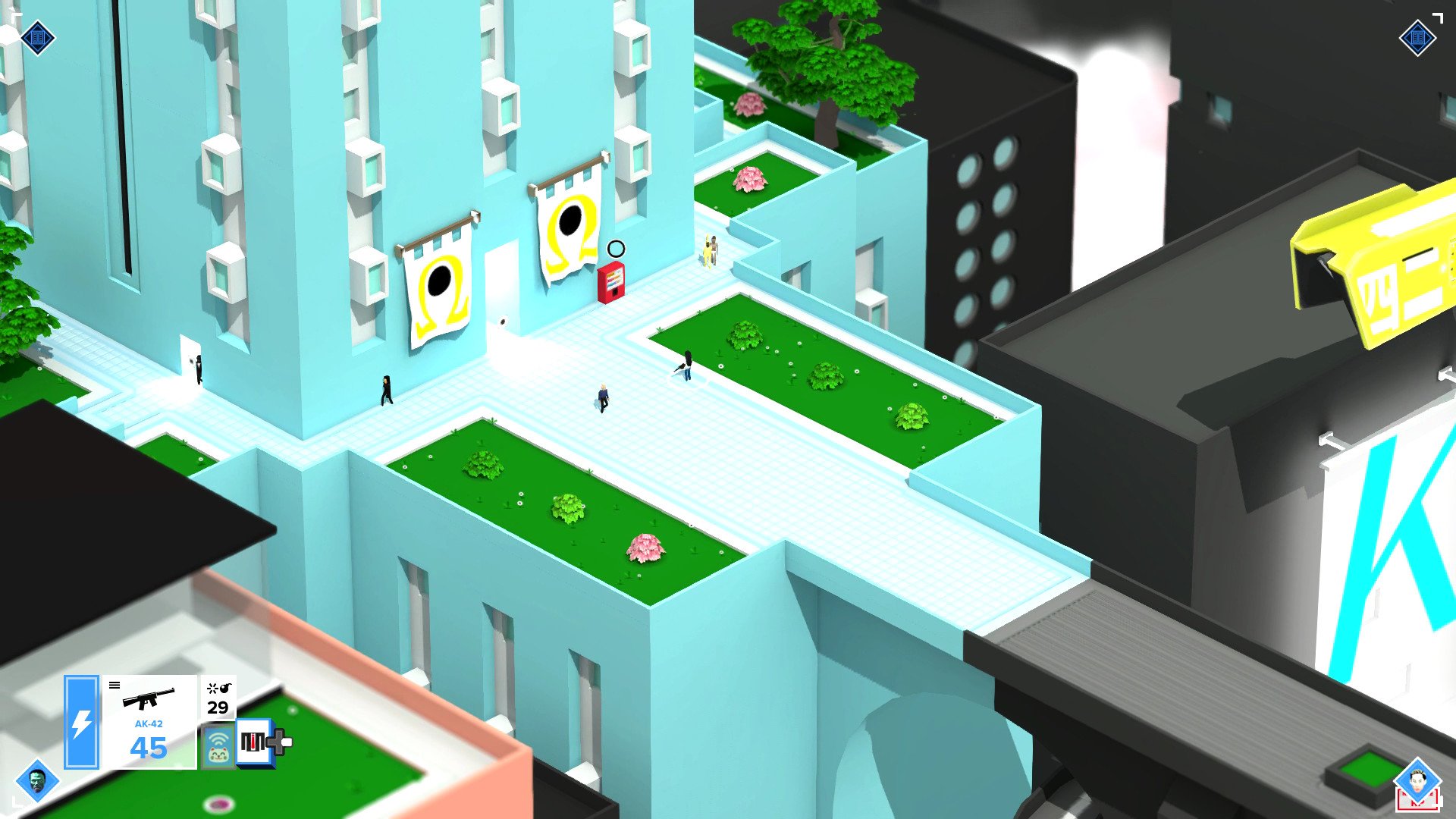
Although the game's isometric style is notable in terms of presentation, perhaps its biggest effect can be seen in gameplay. Tokyo 42 uses a camera that can be set to eight points of view, which can be skewed 45 degrees left and right around the player using the bumpers. When paired with its twin-stick shooter mechanics, you'll be quickly changing views on the fly to keep a clear line of sight to your enemies.
Tokyo 42 uses a camera that can be set to eight points of view, which can be skewed 45 degrees left and right around the player.
Also affecting combat is Tokyo 42's aiming system, which introduces a fresh twist on the core cycle of combat. Though the right stick is used for aiming like a traditional shooter, aiming at longer distances adapts a cursor-like reticle for lining up targets. That sounds like an unnatural concept (especially on consoles), but it's an interesting mechanic that requires both accurate aiming and patience at longer ranges.
These aiming systems add a layer of complexity to your traditional top-down shooter and provide a snappy way to approach movement and combat. However, in densely populated environments, this can prove to be tedious, with the surrounding urban landscape obstructing certain viewpoints. This has sometimes made for some frustrating encounters, where I've struggled to escape an area once pinned down by enemies.
Tokyo 42 review: Summary
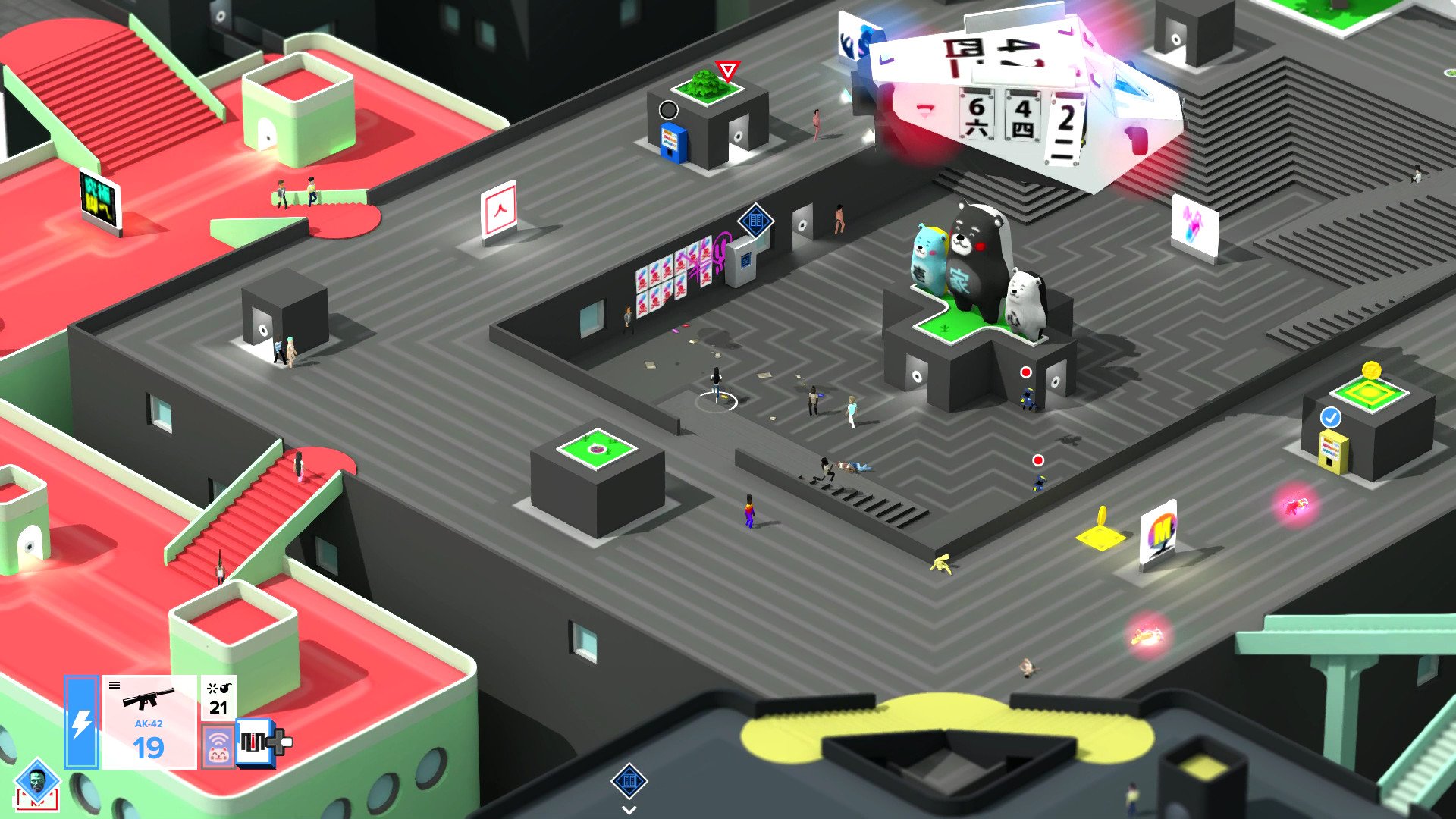
During my time with Tokyo 42, its isometric perspective has made for an interesting slant on visual design and its shooter gameplay. SMAC Games, the developer, managed to create a stylish and dynamic city, which takes the center stage as an integral aspect of the experience.
With engaging combat and a story to accompany it, Tokyo 42 is a great addition to the ID@Xbox program. The game can be picked up today from both the Xbox Store and Steam, priced at $19.99.
Pros:
- Beautifully sleek world.
- Snappy isometric camera makes for some interesting gameplay scenarios.
- Unique but polished gunplay.
Cons:
- Fiddly controls and architecture obstructing the camera can get frustrating at times.
Disclaimer: This review was conducted on Xbox One using a copy provided by Mode 7 Games.

Matt Brown was formerly a Windows Central's Senior Editor, Xbox & PC, at Future. Following over seven years of professional consumer technology and gaming coverage, he’s focused on the world of Microsoft's gaming efforts. You can follow him on Twitter @mattjbrown.

